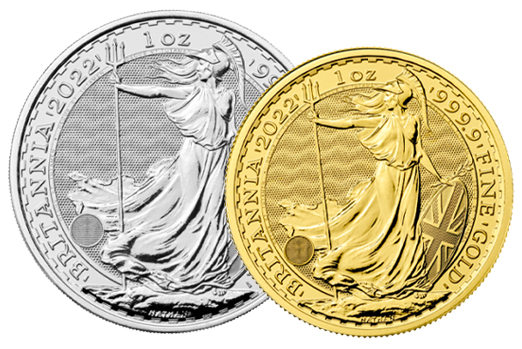
Gold Could Offer Stability in Troubled Times
It is commonly said that gold is supposed to be a hedge against inflation, and that it always performs well when price rises go out of control. Strictly speaking, gold is more of a lagging indicator of inflation in the economic bloodstream, and rather than reacting instantaneously, it reprices itself over the longer term. Such a move ensures that, over a wider time-frame, gold prices are able to preserve wealth.
If you wish to buy gold, it’s wiser to broaden your horizons and think beyond the here and now. It’s tempting to buy into gold, or any other commodity or asset because certain factors traditionally support them rising in value. However, what you actually need to do in the current climate is look at where you would expect to be in a decade’s time. As the last decade or two have shown, anything can happen, and rather than cashing in on quick and easy gains, it’s more prudent to see the long-term intrinsic value of gold.
The scourge of inflation
As we have said, gold doesn’t instantaneously react to higher inflation, but rather rises more gradually, ensuring that purchasing power is preserved on a longer-term basis. This is especially important with regards to inflation, as it is an incremental phenomenon, and its impact on wealth is cumulative. In many ways, the expectation of higher inflation is more of a driver for gold than the actual headline figures, as this tends to suggest leaving your money untouched over several years will see its value eroded rapidly.
Industrial economies were famously dogged by double-digit inflation during the 1970s, and gold prices rose during this time, not specifically due to the publishing of specific inflation datapoints, but rather due to the prevailing mood of the time. High inflation leads to higher wages being demanded, continuing a price spiral, and this specific mood dominated the economies of the 1970s to such an extent that paper-backed currencies like the US dollar and the pound felt worthless.
The removal of a gold standard in 1971 introduced the idea that currencies weren’t exchangeable for a fixed unit of gold, but that governments could simply print as much currency as they needed. By creating more of a given currency, its unit value would fall, so logically, items priced in such a currency would need to rise in value too. Gold did so during the 1970s, between the years 2001-11 and again from 2015-20. The factors behind each rally were subtly different each time, but a perception of economic malaise and potentially higher prices were always somewhere in the headlines.
In 2021, legitimate concerns exist about not just unusually high inflation in the present day, but about potentially higher rates of inflation for the remainder of the decade, than previously forecast. After years of easy money, low interest rates and bubbles in various assets, faster price rises could abruptly end this period. Price stability, or a fixed rate of inflation, is a key central bank goal in countries such as the US and the UK. In order to ensure this mandate, central banks are inclined to raise interest rates, to keep inflation from getting out of control.
To avoid a repeat of 1970s-style stagflation, this raising of interest rates could do much to limit growth prospects as economies attempt to recover from the pandemic. Much of the future inflation yet to come might already be baked into the cake as it were, largely due to structural issues far beyond any central bank’s control. Supply constraints and bottlenecks are a cited cause of higher inflation at present, and if these persist longer than expected, higher inflation could stop becoming a passing trend, and more of an entrenched way of being.
Preserving your wealth
Higher inflation and the higher interest rates to combat it could limit the ability for wealth to be preserved or made in the stock market or housing, which often rely on cheap credit being available. When all other means of preserving wealth lose favour, this is precisely when gold could yet again stage an impressive price increase of its own. People with the money to spend will be eagerly looking for that winning asset or commodity which shows promise, and gold is already an attractive place to be.
Just last summer, the UK gold price broke out to new all-time highs in nominal terms, having doubled since 2015. The gold price has a habit of experiencing sudden unexpected bursts of rising value inbetween longer periods of apparent slumber. Time will tell whether gold is just taking another pause or whether it is about to charge even higher in the coming years. The economic mood at present shows signs of anxiety with regards to potentially higher inflation and the risk of governments and central bankers making policy mistakes.
One of the newest ways to store and preserve your wealth could be through the new range of 2022 gold and silver Britannia coins from UK Bullion, Official Partners to The Royal Mint. The 2022 Britannia series is now in stock, with a full troy ounce gold Britannia costing close to the market price of a standard troy ounce of gold. One of the benefits of buying the 2022 gold Britannia is its VAT-free status, ensuring you keep more of your wealth when making such a purchase. As UK legal tender, gold and silver Britannias are also Capital Gains Tax free when eventually sold.
As inflation incrementally eats away at the value of the pound in your pocket over the months and years to come, gold could respond in kind, repricing itself to help maintain your wealth.
To learn more about the 2022 Britannia range from The Royal Mint, or the other precious metals items we have to offer, don’t hesitate in getting in touch by calling us on 0800 090 3256

+ There are no comments
Add yours